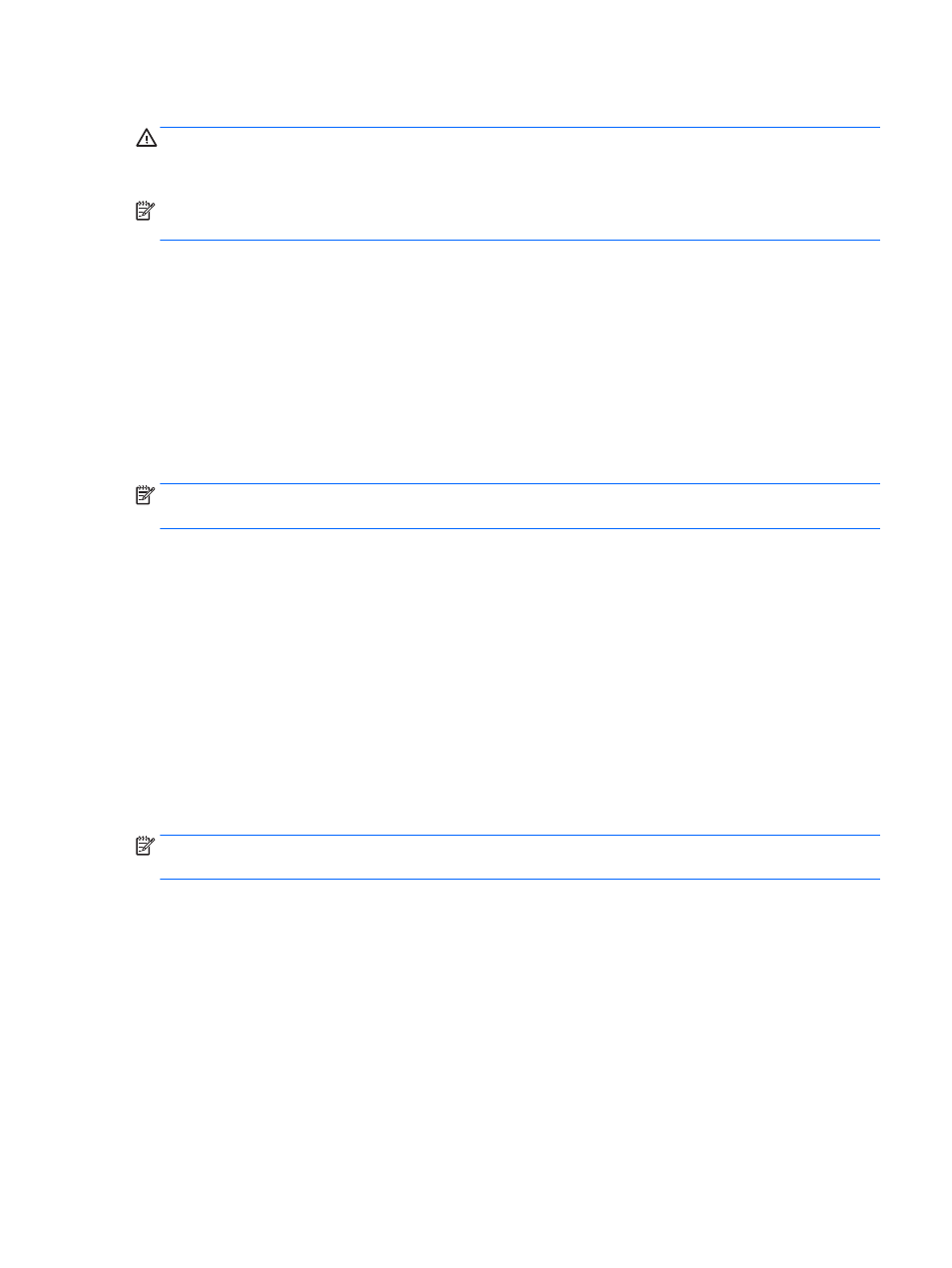Initiating and exiting sleep, Enabling and exiting user-initiated hibernation, Using the power meter and power settings – HP EliteBook 840 G3 User Manual
Page 53

When Sleep is initiated, the power lights blink and the screen clears. Your work is saved to memory.
CAUTION:
To reduce the risk of possible audio and video degradation, loss of audio or video playback
functionality, or loss of information, do not initiate Sleep while reading from or writing to a disc or an external
memory card.
NOTE:
You cannot initiate any type of networking connection or perform any computer functions while the
computer is in the Sleep state.
Initiating and exiting Sleep
With the computer on, you can initiate Sleep in any of the following ways:
●
Briefly press the power button.
●
From the Start screen, point to the upper-right or lower-right corner of the screen. When the charms list
opens, click Settings, click the Power icon, and then click Sleep.
To exit Sleep, briefly press the power button.
When the computer exits Sleep, the power lights turn on and the computer returns to the screen where you
stopped working.
NOTE:
If you have set a password to be required on wakeup, you must enter your Windows password before
the computer will return to the screen.
Enabling and exiting user-initiated Hibernation
You can enable user-initiated Hibernation and change other power settings and timeouts using Power
Options:
1.
From the Start screen, type power options, and then select Power Options.
2.
In the left pane, click Choose what the power button does.
3.
Click Change Settings that are currently unavailable.
4.
In the When I press the power button area, select Hibernate.
5.
Click Save changes.
To exit Hibernation, briefly press the power button. The power lights turn on and your work returns to the
screen where you stopped working.
NOTE:
If you have set a password to be required on wakeup, you must enter your Windows password before
your work will return to the screen.
Using the power meter and power settings
The power meter is located on the Windows desktop. The power meter allows you to quickly access power
settings and view the remaining battery charge.
●
To reveal the percentage of remaining battery charge and the current power plan, on the Windows
desktop, point over the power meter icon.
●
To use Power Options, or to change the power plan, click the power meter icon and select an item from
the list. From the Start screen, you can also type power options, and then select Power Options.
Different power meter icons indicate whether the computer is running on battery or external power. The icon
also reveals a message if the battery has reached a low or critical battery level.
Setting power options
43
